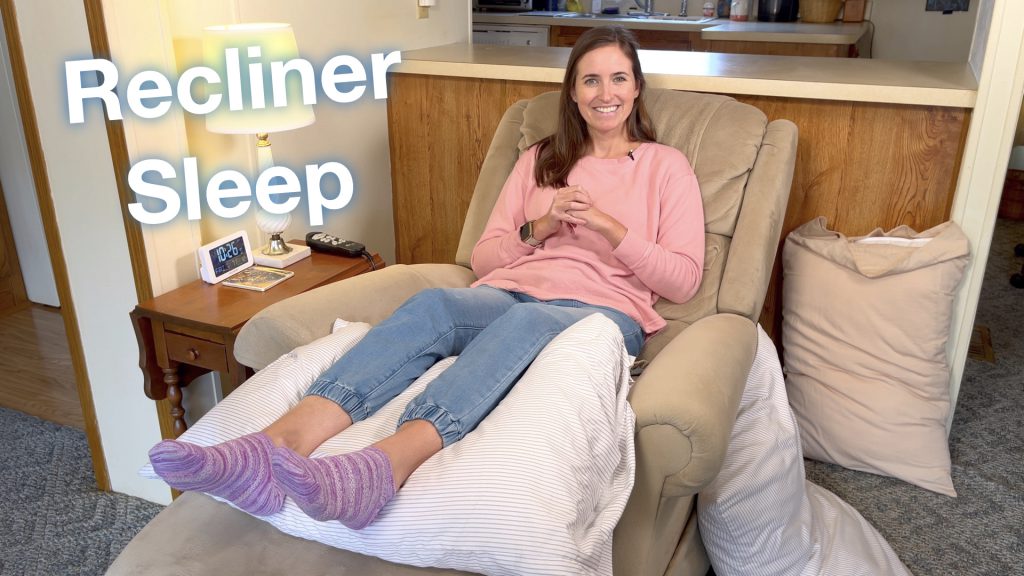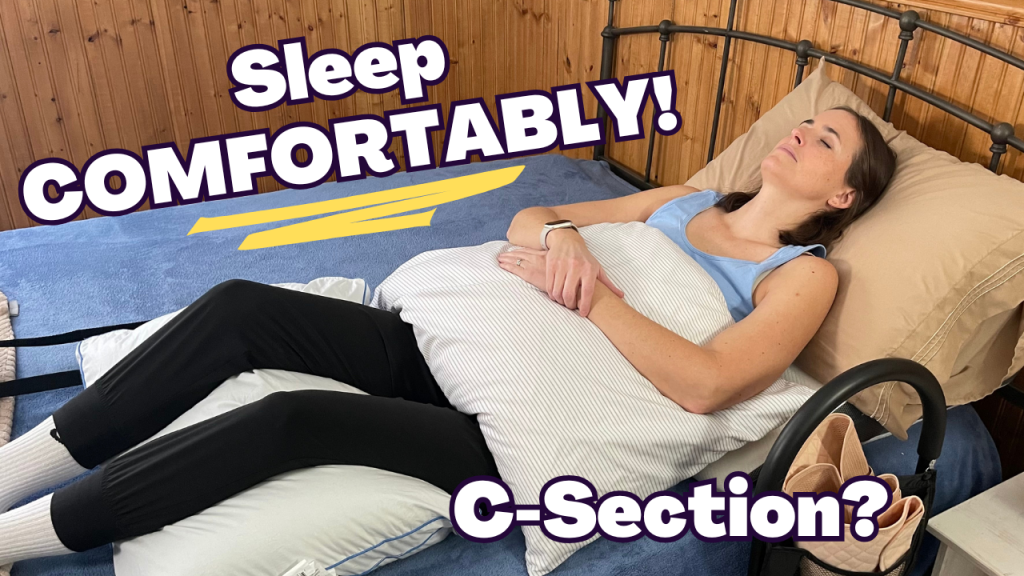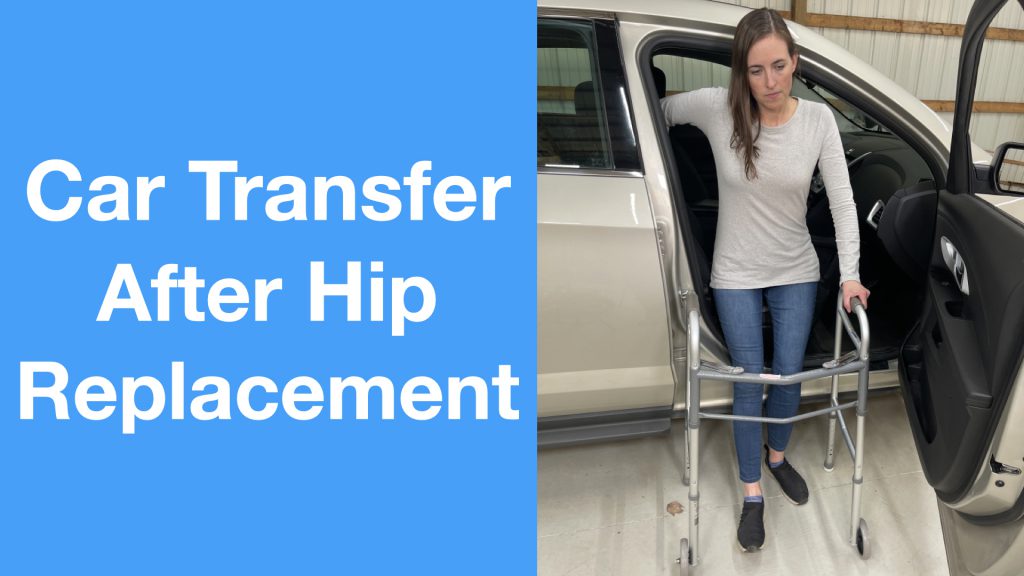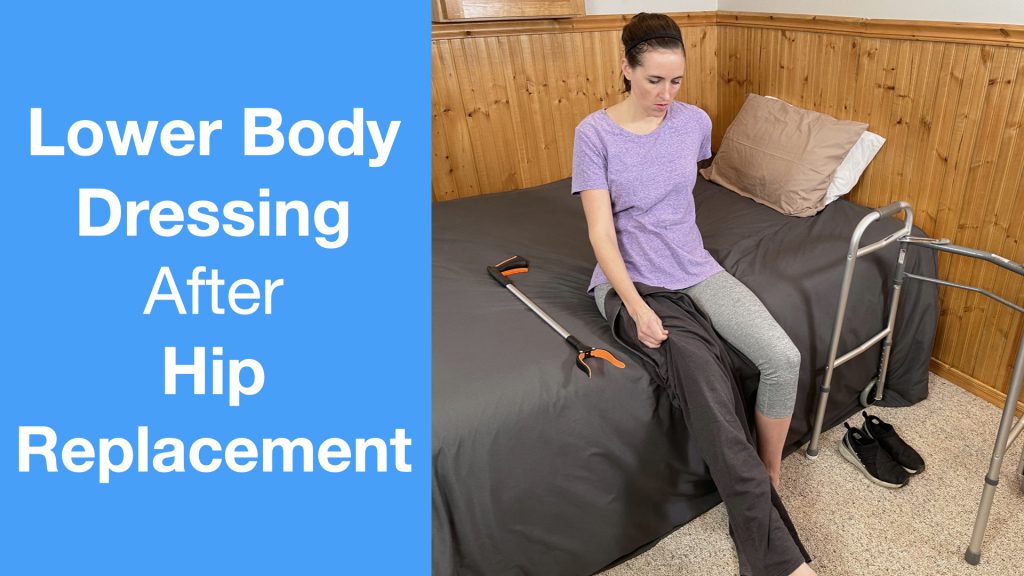If you’re sleeping in your recliner, you’re not alone. Many people find their recliner the most comfortable place to sleep. It’s common for people who are recovering from injuries, recuperating after surgery, or suffering from chronic acid reflux to sleep in their recliners.
However, sleeping in a recliner comes with important safety considerations. Whether you’re sleeping in a recliner for just a few weeks or a prolonged period, keeping your posture supported is essential to avoid injuries.
But don’t worry, there are several positioning aids that you can use to make sleeping in your recliner safe and this post, I will go over several of them.
Starting in a typical reclined position, I’m going to begin at the head and work down to your feet. Along the way, I’ll explain how you can correct potential postural issues that arise from sleeping in a reclined position long-term.
Overview
Head and Neck
Many people who sleep in recliners add a pillow behind their heads. While this may provide a bit of comfort, it pushes the head very far forward, which can cause neck trouble. If your chin is significantly ahead of your chest, it is too far forward, and over time, this will cause neck issues.
If you need to put a cushion behind your head, use a thin pillow so it doesn’t push your head too far forward. Or, you can add a rolled towel behind your neck to help preserve the curvature of your spine. Simply roll a hand towel to a comfortable thickness and place it behind your neck.
Some people find that a travel pillow is the most comfortable. A neck pillow wraps all the way around and prevents you from accidentally sleeping too far in one direction, which can cause uncomfortable neck pain.
Shoulders, Elbows, and Hands
Moving down to your shoulders, elbows, and hands, I recommend using pillows to create a more supportive space when you sleep in a recliner. Many people think they are all set with the armrests, but problems can occur when you sleep in your recliner for extended periods.
Using pillows under your arms provides a more ergonomic and comfortable position for long-term sleep in a recliner. Only using the armrests on your recliner puts pressure on the elbows and the backs of the arms.
I like to add two pillows, one under each arm, to elevate your arms so they are over your body. This position takes the pressure off the elbows and elbow nerves and puts the shoulders in a lighter position, pulling them off the chair slightly instead of having them press so hard into it.
Lumbar Support
One of the most significant issues with sleeping in a recliner is losing the curvature of your lower back, so it is vital to attend to this area. When you’re sleeping in a recliner, a lot of pressure is placed directly on your sacrum or tailbone. Because you’re not lying completely flat, gravity causes constant pressure on this area.
To help with this, I recommend adding lumbar support. Lumbar support pushes the lower back into a more natural curve, stretching out the arch of your back.
Lumbar support can come in many forms, such as a small pillow or a towel roll. I like a towel roll because it’s easy to set up, and you can adjust its size and width for the most comfort. You can also purchase a lumbar support pillow, like the kind you find for office chairs.
Simply having lumbar support behind your lower back pushes it into a more natural curve and gives your back an important stretch. This way, lying back will be similar to what you would experience while lying flat in bed, which is better for you long-term.
If you can’t tolerate lumbar support all the time, at least have it in place some of the time. Even if you can’t stand it for a whole night’s sleep, it will benefit you, in the long run, to at least use it during naps and resting periods.
Hips, Knees, and Legs
Now that we’ve supported the head and upper body let’s talk about the lower half of your body. One important consideration is the area between the seat and the footrest. Depending on the type of recliner you have, this gap might not have enough padding to support your legs.
If you’re experiencing a lot of stiffness in your knee joints when you get up after reclining for several hours, it’s because gravity is causing fluid to pool behind your knees. When you go to stand, that fluid makes your knees tight, which makes standing and moving difficult and dangerous. To prevent this, you need consistent support between the back of the thigh and the back of the calf.
Add a pillow if your recliner, like many, doesn’t have a supportive cushion in this gap. Adding this support is critical and will prevent discomfort over time. A rolled-up blanket or pillow used to fill that space will make a big difference.
Most recliners don’t get your legs above your heart, which makes controlling swelling in the feet and legs a problem. Since few recliners will get you in a fully elevated position to help manage lower extremity swelling or edema, I highly recommend adding a pillow under the feet every so often to elevate the legs.
Another reason for putting a pillow under your feet is to take pressure off your heels. Common locations for wound development for people who sleep in recliners are the backs of the heels, the tailbone, and the back of the head. These three points have a lot of pressure on them, and you can remove that pressure by adding extra support in the areas around them.
Find a pillow and put it so that your heels rest just off the edge, elevating them, so they are floating on air, with nothing underneath them. Using a pillow to take pressure off the heels is called “floating the heels.” Floating the heels also reduces swelling in your feet and the risk of pressure points or sore spots.
You Can Sleep Safely in a Recliner
The positional aids discussed in this article will allow you to sleep safely in a recliner. When you use a combination of pillows to elevate the feet and support your spine, you can safely use a recliner for extended periods. Be consistent and use the support appropriately, and you won’t have significant issues.
- How to Sleep After a C-Section or Abdominal SurgeryRecovering from a C-Section, appendectomy, abdominoplasty, or other abdominal surgery can feel overwhelming, especially when it comes to something as essential as sleep. With a tender incision and limited mobility, finding a comfortable position may seem impossible—and yet, proper rest is critical for healing! In this …
How to Sleep After a C-Section or Abdominal Surgery Read More »
- How to Get In and Out of the Car after Hip ReplacementGetting in and out of a car after a hip replacement can feel like navigating an obstacle course. Ensuring you move safely and avoid unnecessary strain on your healing hip is essential for a smooth recovery. Whether you’re heading to a follow-up appointment or simply enjoying …
How to Get In and Out of the Car after Hip Replacement Read More »
- A Complete Guide to Lower Body Dressing After Hip Replacement SurgeryRecovering from hip replacement surgery (or similar traumatic injury) comes with its challenges, especially when it comes to everyday tasks like getting dressed. While your mobility may be temporarily limited, dressing your lower body can be made much easier with the right strategies and tools. This …
A Complete Guide to Lower Body Dressing After Hip Replacement Surgery Read More »




